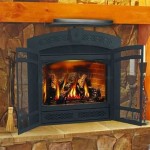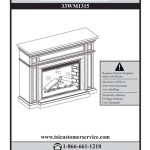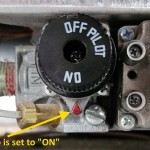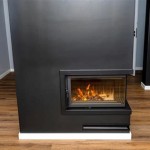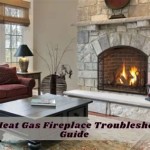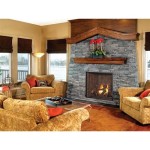Outdoor Fireplace Flue: Ensuring Safety and Efficiency
An outdoor fireplace offers a unique focal point for patios, decks, and gardens, providing warmth and ambiance for social gatherings and quiet relaxation. A critical component of any outdoor fireplace is the flue, which serves to safely vent smoke and combustion byproducts away from the fire and surrounding area. Understanding the function, types, and maintenance of an outdoor fireplace flue is paramount to ensuring safe and efficient operation of the appliance.
The flue, often mistakenly referred to simply as a chimney, is the lining or conduit within the chimney structure itself. It is the flue that actually carries the smoke and gases. The chimney is the larger structure surrounding the flue, providing structural support and insulation.
Understanding the Function of an Outdoor Fireplace Flue
The primary function of an outdoor fireplace flue is to create a draft that draws air into the firebox, fueling the combustion process, while simultaneously directing smoke and harmful gases – such as carbon monoxide – upwards and away from people. A properly functioning flue creates a negative pressure differential, pulling air in at the bottom and expelling exhaust at the top. This process not only keeps the air around the fireplace cleaner but also improves the efficiency of the fire, resulting in a hotter, cleaner burn. Without a properly designed and maintained flue, smoke can backdraft into the surrounding area, creating a nuisance and potentially posing a health hazard.
The efficiency of the flue is affected by several factors, including its height, diameter, material, and the surrounding environment. A flue that is too short may not generate sufficient draft, while one that is too narrow can restrict airflow, leading to smoke spillage. Obstructions within the flue, such as debris, nests, or creosote buildup, can also significantly hinder its performance.
Types of Outdoor Fireplace Flues
Various types of flues are available for outdoor fireplaces, each offering unique advantages and disadvantages based on material, cost, and installation requirements. The selection of an appropriate flue depends on factors such as the type of fuel burned, the design of the fireplace, and local building codes.
Clay Tile Flues: Historically, clay tile flues were the most common choice. These consist of individual clay tiles, mortared together to form a continuous lining within the chimney. While relatively inexpensive, clay tile flues are susceptible to cracking and deterioration over time, especially when exposed to extreme temperature fluctuations. Regular inspections are essential to identify and address any damage that could compromise their integrity. If cracks are found, the entire system should be relined with a more durable material.
Metal Flues: Metal flues, typically constructed from stainless steel or aluminum, offer superior durability and resistance to corrosion compared to clay tile. Stainless steel flues are particularly well-suited for outdoor fireplaces due to their ability to withstand the elements. Metal flues can be either rigid or flexible, with flexible flues offering greater versatility for installations in existing chimney structures. Metal flues also heat up more quickly than clay flues, which improves draft immediately after ignition. However, metal flues do cool down faster than clay tile flues.
Cast-in-Place Concrete Flues: These flues are formed by pouring concrete into a mold within the chimney structure. Cast-in-place flues offer excellent structural integrity and insulation. They provide a seamless and robust lining that is resistant to cracking and deterioration. However, the installation process can be more complex and time-consuming compared to other flue types.
Maintenance and Inspection of Outdoor Fireplace Flues
Regular maintenance and inspection are crucial to ensuring the safe and efficient operation of an outdoor fireplace flue. Neglecting maintenance can lead to a build-up of creosote, a highly flammable substance that accumulates as a byproduct of burning wood. Creosote buildup increases the risk of chimney fires and reduces the efficiency of the flue.
Annual Inspections: A qualified professional should conduct an annual inspection of the flue to assess its condition and identify any potential problems. The inspection should include a visual examination of the flue liner, chimney structure, and surrounding area. Specialized cameras may be used to inspect the interior of the flue for cracks, blockages, or other damage.
Cleaning: The flue should be cleaned regularly to remove creosote buildup and other debris. The frequency of cleaning depends on the type of fuel burned, the frequency of use, and the efficiency of the fireplace. As a general rule, flues that are used frequently or burn wood that is not fully seasoned require more frequent cleaning.
Addressing Issues Promptly: Any issues identified during the inspection or cleaning process should be addressed promptly to prevent further damage and maintain the integrity of the flue. Cracks in clay tile flues, corrosion in metal flues, and blockages caused by debris or nests should be repaired or removed as soon as possible.
Selecting the appropriate flue type coupled with proactive maintenance extends the lifespan of the fireplace system itself and contributes to a safer and more enjoyable outdoor experience. Consult with a qualified professional to determine the best flue system for a specific outdoor fireplace application and to establish a regular maintenance schedule.

Is A Chimney Flue Must Your Diy Outdoor Fireplace Headquarters

Does Outdoor Chimney Need Cap The Blog At Fireplacemall

Stonetutorials Living Stone Masonry

Does Outdoor Chimney Need Cap The Blog At Fireplacemall

Outdoor Rumfords

Does Outdoor Chimney Need Cap The Blog At Fireplacemall

Brick Oven Chimney Height What To Choose Round Grove S

Maximus Outdoor Chiminea With Storage Flue Fireplace

Best Outdoor Fireplace Design Ideas Cad Pro

Stonetutorials Living Stone Masonry
Related Posts


